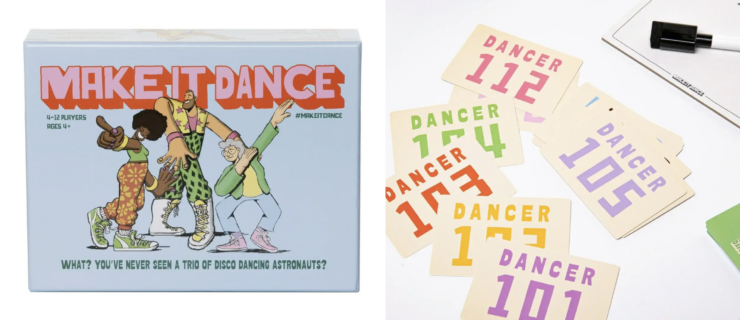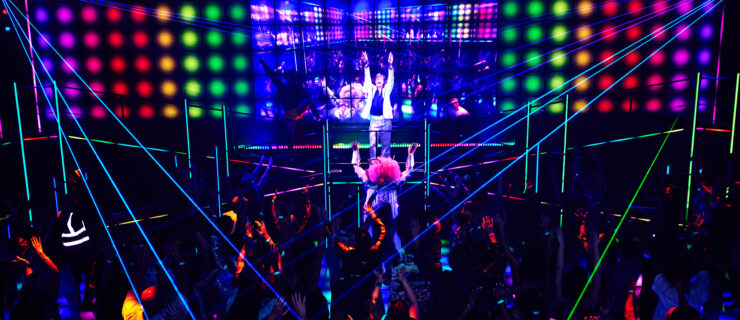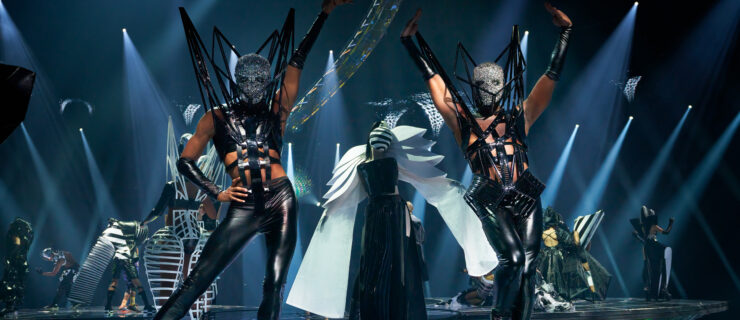Classes to Expect as a Dance Major
College dance departments offer more than ballet and modern technique. The following are a sampling of the types of classes you’re likely to take as a dance major. “These courses are designed to broaden a student’s standard dance curriculum,” explains Bill DeYoung, Chair of University of Michigan’s dance department. The guide is compiled from interviews with former and current students and professors in the dance departments of California Institute of the Arts, Sarah Lawrence College and University of Michigan.
Anatomy/Kinesiology
Just as committing choreography to muscle memory is necessary for rehearsal and performance, memorizing the body’s anatomy is important to dancers’ overall physical awareness. Anatomy/kinesiology is the study of the musculoskeletal structure, emphasizing the moving body. The class involves memorizing and drawing muscle and bone structures. Some courses, like SLC’s, offer movement practice such as Irene Dowd’s “Spirals” (a warm-up designed to mobilize all joints and major muscle groups) to apply and analyze movement anatomically. Former SLC student Pilar Maez valued this application method, “because it took all the information out of the book and made it relate to movement on our own bodies,” she says. Studying functional anatomy also helps dancers build body awareness, which can prevent injuries.
Body Therapies
Body therapy courses provide a comprehensive introduction to body conditioning practices such as Alexander technique, Pilates, Feldenkrais, yoga, massage therapy and Gyrotonic. These studies offer alternative ways of staying in shape, help with injury prevention and increase physical and mental awareness.
Composition
Basic principles of creating and structuring dance are taught in composition classes. Activities are designed to stimulate creativity and the creation of movement. Expect peer reviews and critiques of your work. The techniques learned here are building blocks for your future dance-making endeavors. Even when working as a professional dancer, this kind of training “gives you a leg up—you might even be able to help with the choreographer’s thought process,” says Katie Diamond, a CalArts graduate.
Contact Improvisation
Contact improvisation examines the principles of improvising movement when two or more bodies come into physical contact. Dancers discover ways of giving and taking each other’s weight and moving through positions. They also test personal comfort levels and develop spatial awareness. SLC’s contact professor Kathy Westwater stresses the importance of taking risks with this technique. As more modern, ballet and jazz choreographers explore their ideas through improvisation, and investigate unique kinds of lifts, dancers familiar with contact principles are becoming highly marketable.
Dance and Related Arts
Dance and related arts courses teach dancers how to collaborate with artists in other fields. The instructor will likely facilitate collaborations between your class and artists in another department, and may put forth a theme for you to work together on. Collaborating with many different artists requires an open mind, cooperation and problem-solving skills. The importance of this course goes beyond creating a performance piece. As former UM student Julie Blume says, “It is a lesson in teamwork, creativity, tolerance and compromise.”
Dance History
Most undergraduate dance history courses are general overviews of 20th-century dance performance predominantly in the U.S., which focus on the works of influential dancers and look at specific periods. You’ll watch videos and read articles to help develop your critical perception, and write reviews of live performances. Studying dance history while reviewing current works is designed to help you realize how yesterday’s dance has influenced what’s created today.
Lighting Design and Stagecraft
Lighting design and stagecraft courses explore both the theoretical and practical issues in designing lighting for dance. Interpreting the choreography, its mood, and its relationship to the music contribute to the development of a lighting concept that transports the audience in a way the choreographer intends. Basic color theory and the functions of theatrical equipment are standard topics. Organization, patience and interpersonal skills are needed to create cue sheets and communicate with other designers and choreographers. Participating in the technical aspect of the theater is usually a requirement for dance majors; a smart dancer knows as much about what’s happening onstage as behind the scenes.
Senior Career Seminar
Senior career seminars help prepare dancers for life after graduation. You may learn self-promotion (creating a resumé, for both dance and business, and what makes a headshot great), grant writing and cover letter procedures, NYC survival tips, information about prominent dance companies, audition techniques and ways to support yourself financially while pursuing a dance career.
Showings Class
Showings classes provide a safe space to share works-in-progress throughout the year. Composition class assignments and graduate thesis projects are treated equally. All work brought to the class is performed and discussed in a group. The course is a forum for the artist to experiment, receive feedback and learn to talk about his or her work.
Video Dance
Video dance courses focus on capturing and creating dance for the camera. Participants not only learn how to handle a camera and experiment with angles and settings to shoot dance effectively, but also create a video dance. These courses usually require a major time commitment, but students agree that it’s worth it, as dance and technology are becoming more intertwined—on the stage and for preservation.



